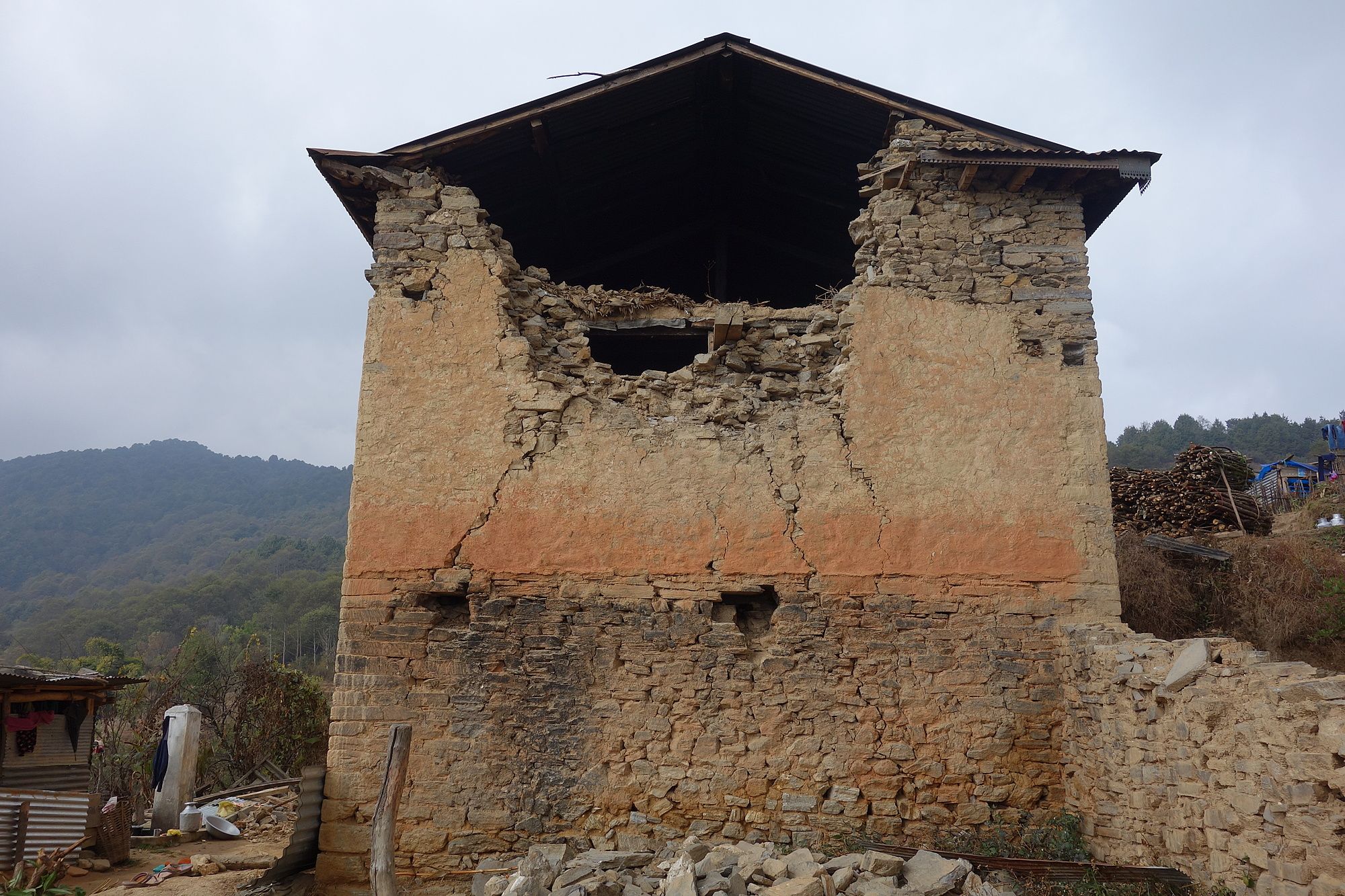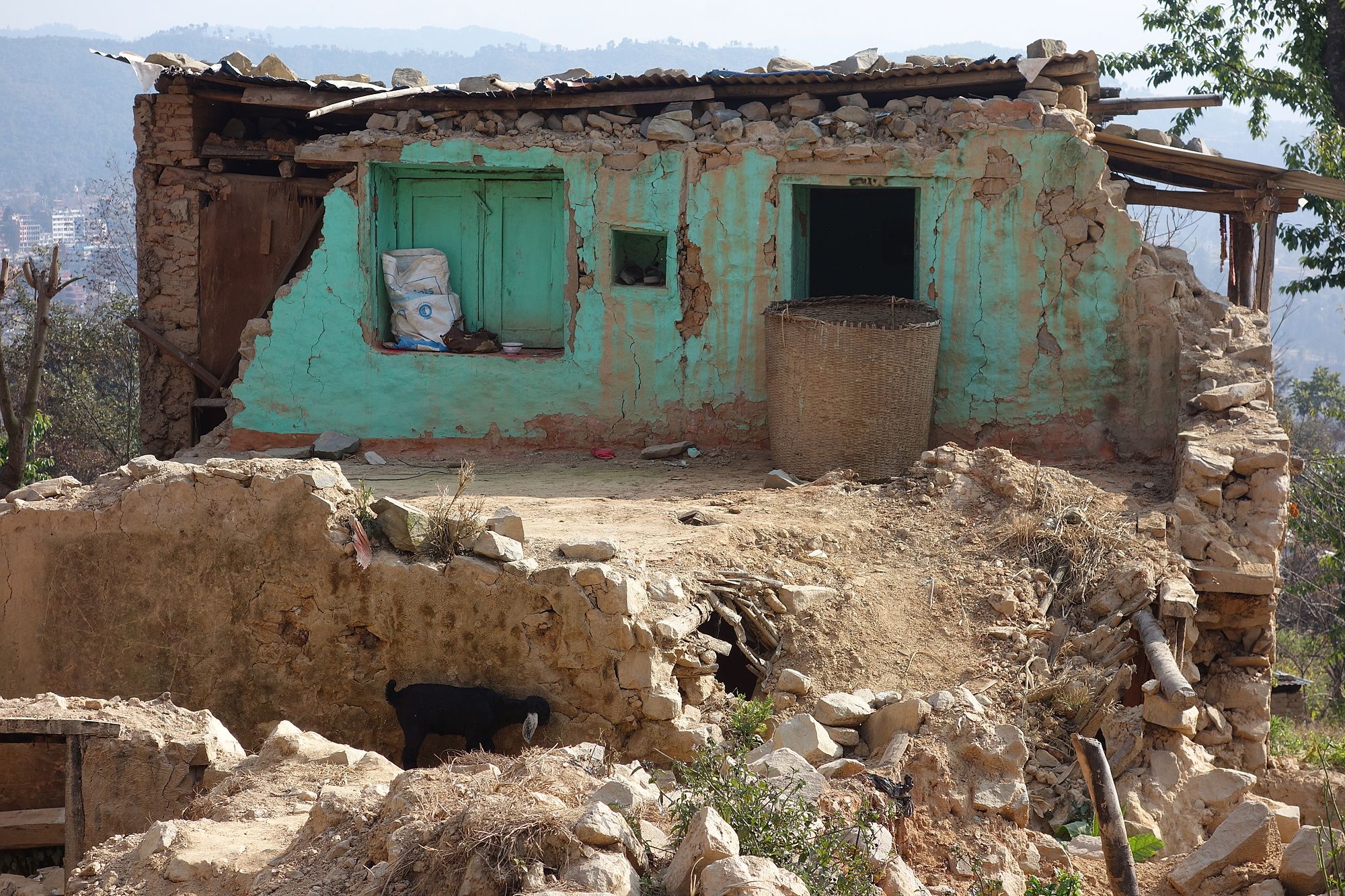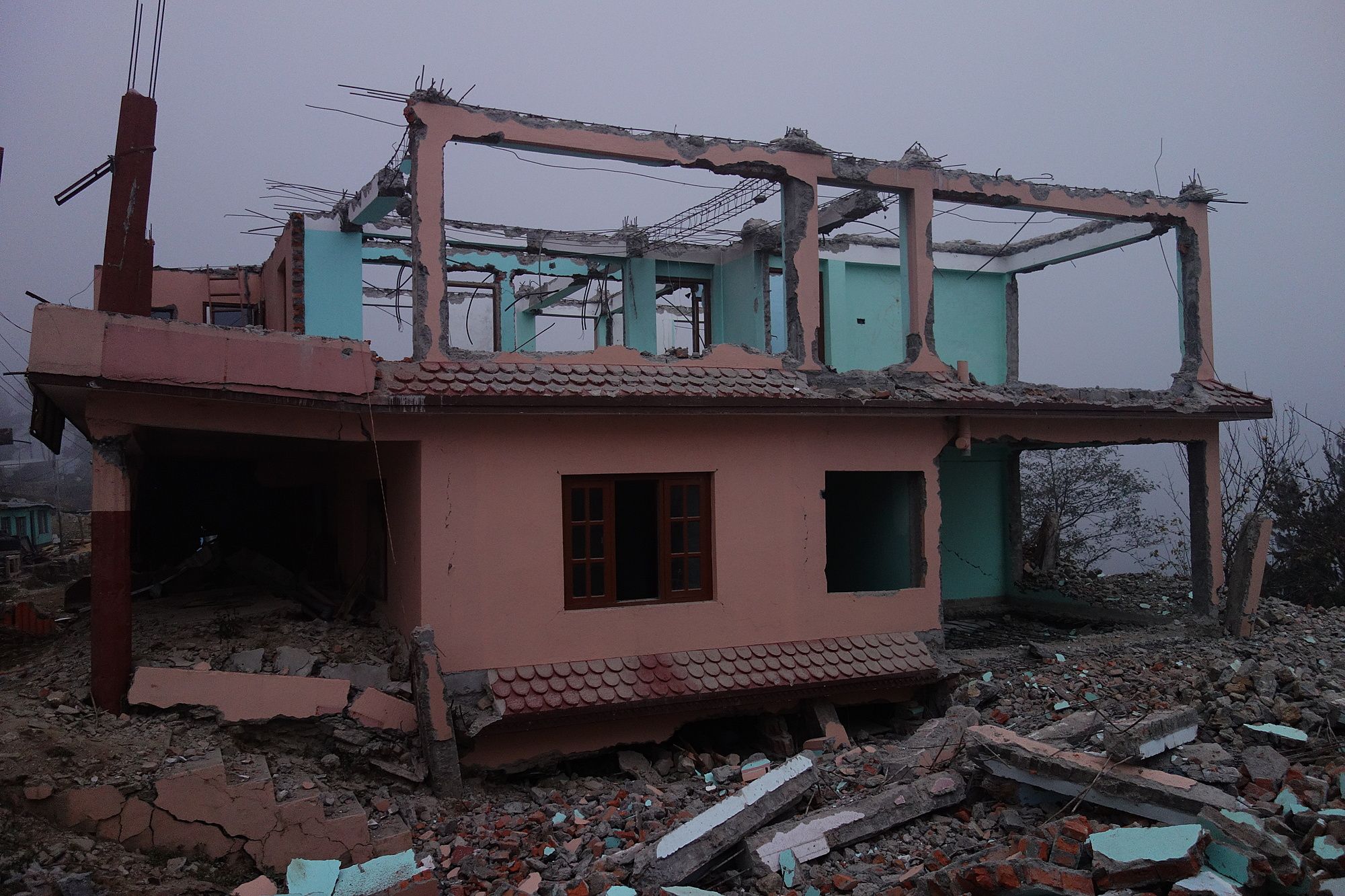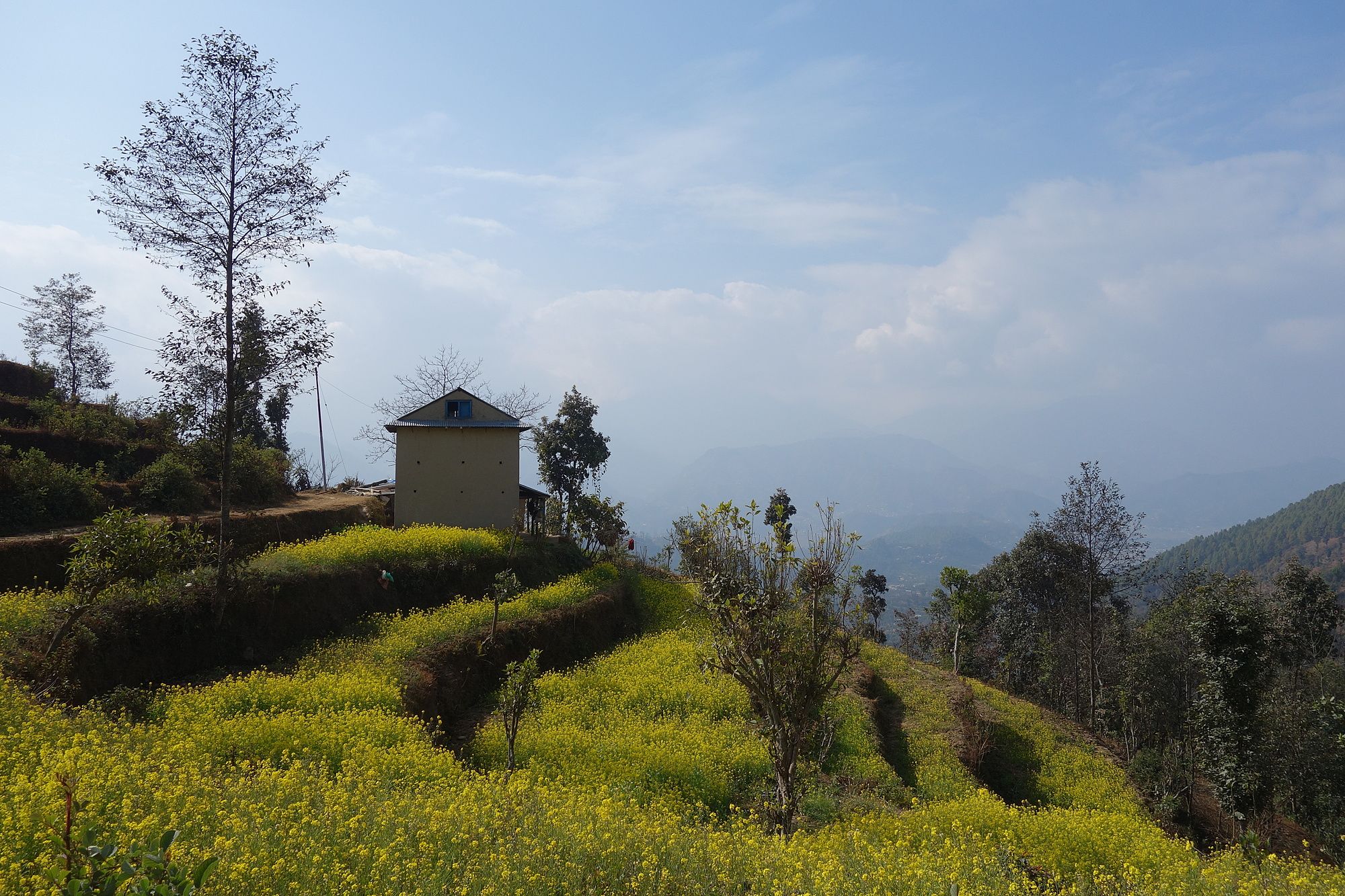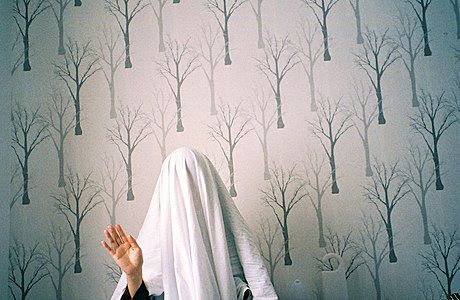When The Mist Clears: Nepal's Unnatural Disaster
Florence Reynolds on visiting the harsh reality of Nepal's rebuild
As naturalist John Muir once said, “the mountains are calling and I must go,” and I felt like Nepal had been calling me for years. From adventure books and travel guides, we’re conditioned to imagine soaring icy peaks, winding valleys and breathless adventure. On my arrival, I found mountains of rubble. Gesturing to one massive pile on the outskirts of Dhulikhel, a resort town of about 16,000 that escaped some of the worst damage, Sanjog – my tour guide when I arrived, and as time went on, my friend - tells me not to linger too long. “If you dig through the rubble you will find bones – a hand here, a leg there.”
Over 8,500 people died in the April 2015 7.8 earthquake, the worst natural disaster to hit the region since 1934. A year later, very little has changed since the immediate aftermath. Nepal, currently 145th out of 187 countries on the UN’s Human Development Index, has not bounced back, is not rebuilding to be bigger, stronger and better. It is as though the quake did not just break buildings and lives; it broke a timeline of development in one of the poorest countries in the world.
Growing up in wobbly Wellington, NZ, I thought I would be mentally prepared for the occasional tremors I had been told to expect while travelling Nepal. This feeling of knowing what to expect evaporated very quickly as I trekked through the Kavrepalanchok, Bhaktapur, and Sindhupalchowk districts of the country’s central-east interior. The earthquake damage was not just severe - it was inescapable. Almost every building I passed was broken in some key, structural way – a few bricks off the top of a loadbearing wall, or a crack mirroring the tectonic faults below. Some managed to stand frozen in cross-section, entire sides missing. Other former homes were merely scattered memories; stones slumped in a pile. All I could do was keep walking. As the days passed I became accustomed to brokenness as the norm. Even so, every now and then, something would bring to me to the brink of tears, like the sight of three kids playing outside a tiny tin-shed. This was their new house, set amongst the shadows of the 30cm of outer foundation wall that was all that was left of their former home.
These were the larger towns. My arrival at Chisapani, a village near Shivapuri Nagarjun National Park in central Nepal, was more disorienting still, leaving me in a state of real life pathetic fallacy, my insides filled with that eerie emptiness of walking through dense mist. As I reached the plateau of a steep climb, piles of bricks, armchairs, and wood lined the roads. Low clouds blew through the air. They clung to the sides of the buildings as though trying to cushion them and keep them upright, or perhaps trying to comfort what was left of a town. Despite the mist’s best effort, several buildings looked as though they might topple at any moment. Standing abandoned and surrounded by bricks and furniture, it was as though it were still the day after the quake. “This was a hotel, and that one a restaurant. The villagers are living in a camp down the road now,” Sanjog explained. When people returned to use buildings, it was tentative. In New Zealand, you’re told “drop, cover, and hold” at school. In Nepal, you run out of the building. You run for your life. Perhaps the devastation made me more confident than was wise. What else could nature offer Nepal now?
*
Overnight at a meditation retreat in Budhanilkantha on the outskirts of Kathmandu, the day’s lesson of zen “equanimity” slipped away, replaced with a pounding, restless frustration as I tossed and turned. A dog was barking incessantly next door. Minutes passed, dragging me unwillingly closer to the 4am wake-up bell.
Suddenly, the ground jolted, the whole building shook. I did not, could not, think. Up and at the door, faster than the women sleeping closest to the exit, I ran. Out the door and up the stairs. My legs were somehow unencumbered by my trailing sleeping bag. An Australian accent followed me shouting “Shit! Shit! Shit!”
When I was five, I was chased down by an angry dog that was usually chained in the neighbour’s property. It managed to free itself and enter our section under the garden gate. I bolted when I heard it growling and ran, felt it momentarily seize the base of one of my small shoes in its teeth. I kicked back, scrambled ahead, and fled around the house, through the compost heap, and up a tree.
Like then, fear took over my body and I didn’t turn back until I was on higher ground, far from the potential danger. Shouts filled the valley below as all of the villagers did the same. Now, all of the dogs were barking. Shaking and crying, I scrabbled to recall any of the day’s lessons, something to find a balance. For a long while, the cold night air seemed secure enough – better than being inside again. However, eventually fatigue replaced adrenaline - the warmth of my bed tempted me back under the four storeys of concrete and brick.
*
To witness the extent of the devastation was visceral – it was even more shocking to gradually realise how financially and logistically limited the response was. Coming from the West, perhaps naively, I was stunned. I am used to being kept out of harm’s way by council and government initiatives. My visits to Christchurch in the years after the 2011 quake were always heartbreaking, but did not feel unsafe. Circling the CBD, it was possible to see some damage, but we were sectioned away from the worst of it. Risks were identified and managed, roads and street blocks cordoned off – at once hiding the biggest swathes of destruction and protecting me from hazards. Small tremors I felt in Christchurch and Wellington did not seem as scary as those in Nepal.
When the ground shook in New Zealand, my world still seemed solid. In Nepal, despite ongoing aftershocks as big as the 5.5 I experienced that night, there was no red tape, or red zones, or yellow zones, or indicators of what you could walk inside that wouldn’t collapse on you. No cordons. No signs. No traffic diversions. No supportive scaffolding on teetering buildings. No hard hats. What would have been an extremely dangerous one-off event in the Western world is the ongoing precarious reality for everyone who lives in Nepal.
The stark contrast reminded me of a lecture I once had at university. “Disasters,” we were told, “are not ‘natural’ events.” Instead, as I was seeing first hand here, their effect is mediated by layers of human institutions, structural inequalities, and wealth distribution that determine people's exposure to the elements.
As Kofi Annan warned in 1999, “Ninety percent of the disaster victims worldwide live in developing countries… The vulnerability of those living in risk prone areas is perhaps the single most important cause of disaster casualties and damage”. No two earthquakes are comparable, but the death toll of over 8,500 in Nepal’s 7.8 quake against the death toll of 185 in Christchurch’s 7.3 quake drives that point home.
Every life is precious, but there is the issue of scale. I had a basic geological understanding of what made some quakes harder and heavier than others, but I was only slowly beginning to understand what human factors on the ground caused the differences in outcomes. I dug for reasons behind those factors whenever I could, talking to local NGO workers, volunteering with friends, and rattling through 8-hour bus rides with strangers.
The truth is harsh. Scattershot education about quake risks played a role in some deaths, explained Ashim, a local NGO worker. “Luckily it was during the daytime when most people were in the fields, or many more would be dead. But half-education killed some people, especially children. They were outside and remembered what they learnt in school about hiding under the table – so rushed back in, only to be buried.”
The main problem was that most buildings in Nepal were not designed or constructed to be quake-proof. They went up haphazardly, with minimal oversight. What was the glaring exception in Christchurch was more or less the rule in affected regions of Nepal. Stone walls became rubble, and multi-storey buildings simply pancaked, stacking in on themselves. Walking through a small town in Sindhupalchowk, I asked Ashim why there was such a difference in construction between there and in Kathmandu. “In the villages, people use the resources they have got – stones, bamboo, dirt. They use traditional ways to build houses. Good construction is expensive and resources are hard to transport.” That made sense: I had passed through villages accessible only by windy and pot-holed dirt roads, settlements ascended to by the footpaths I walked. There was no way to bring in a concrete mixer, heavy machinery or large building supplies. Even many food items were a lot more expensive in the rural areas because they had to be driven in.
Despite this, people seemed to be rebuilding in exactly the same way as before. “The government says it will make strict building guidelines, but nothing has happened yet.” He continues, “Even if they do, will they check? Will many Nepali people be able to afford this? People who are uneducated blame God rather than the engineers who approved their design.” Seeing firsthand the blunt arithmetic - how more poverty equalled more deaths in a disaster - was upsetting. Seeing the potential for the cycle to repeat, constructed stone by stone, was even worse.
Climbing a hill terraced yellow with mustard flowers, I looked back down at an evacuation camp. It had 80 or so tents and makeshift shelters that were the homes of families. These had been their homes for four seasons now– through snow, monsoons, and mosquitoes. An NGO worker explained that people have no choice but to endure. “The government is corrupt and ineffective. They promised us $2,000 to rebuild our houses, but no one has got anything yet. My family had to rebuild ourselves without help. Many people cannot.” I thought of the political scramble to help Christchurch rebuild – if not as a moral imperative, as a matter of reputational life or death. In less than a month after the earthquake, the Christchurch Earthquake Recovery Authority had been created. And in Nepal? It took nine months for the equivalent National Reconstruction Authority to launch.
While USD $4 billion in aid has been pledged to the government, it has largely yet to be distributed while donors and donee point fingers at one another. Thousands of people are still living in camps like those tents clustered on the terraced hill, or in temporary corrugated iron sheds and bamboo structures erected with the help of international aid organisations. “These are not so good either”, Sanjog says, gesturing to a tiny corrugated iron shed home beside the road, “In the monsoon, the water drips come inside.” As time passes, what should have been temporary is gradiating into the permanent.
It was not just earthquake recovery that seemed stalled; everything in Nepal seemed locked in slow motion, progress so slow it was hard to distinguish. The difficulty of life post-quake has been exacerbated by an ongoing blockade at the Indian border and the fuel supply crisis it created. On the ground, the reasons why vary – rumour and mistrust travels fast. Some say the blockade is the result of a protest by ethnic minority groups who feel under-represented (Nepal was a disparate set of kingdoms long before it became a nation state, and so to be Nepalese is a sense of allegiance rather than ethnicity in the way that has often been uneasy); others allege it’s a strategic act as part of the Indian government’s desire to control Nepal’s rivers. Either way, the blockades and associated protests followed almost immediately in the wake of the one big step the Nepalese government took after the quake: enacting a new constitution in September 2015, which Madhesi and other subaltern communities believe may marginalise them from public life.
Waiting for a bus that was an hour late, I couldn’t quite figure out whether the regular lengthy delays were purely due to lack of fuel or just the way of life in the post-quake malaise. Daily tasks ground on around me as I walked around Kathmandu, but seemed dissipated. I didn't have to go far before seeing a petrol queue. People sat on their motorbikes in lines that stretched around an entire block. They waited all day, with a patient serenity that would be unthinkable back home. “It’s a bit better now than before,” Ashim tells me. “If there are lines, at least that means there is some petrol.”
But ‘some petrol’ is not enough to facilitate daily life, a worker at a women’s shelter explains: “Sometimes the school bus doesn’t turn up because there is no fuel, so the kids cannot go to school that day.” Cooking gas, too, is limited. Restaurants were often closed or cooking on fire wood. In theory, it meant great flavour: in practice, it meant a wait so long I would scoff the food in quick, hungry mouthfuls on its arrival, guilty that I barely registered the enhanced taste. When I showered, I personally cursed the blockade as I splashed myself with unheated water, attempting to get the grime off one goose-bumped limb at a time.
Despite the challenges of daily life, the people and the land have a resilience that won’t be bowed by poverty or hidden under rubble. I would be back in a heartbeat. As a visitor, it’s very difficult to weave through its smiling faces, its temples and its lanes and not feel an obligation to do more. As I sadly watched Nepal disappear from the plane window, I remembered the first efforts at rebuilding, the same as before, and wondered what could prevent such a tragedy from happening again. We know that there will be more earthquakes in Nepal and in New Zealand. We know, with a changing climate, that we are likely to see even more extreme natural events that will cascade into disasters around the world.
“Life” a 16-year-old girl on the street of Pokhara told me as she described the loss of her home and family, “Is sometimes up, sometimes down.” That much is true, but knowing what we know, what will we do to try to smooth the ride – to make sure the same disaster doesn’t happen the same way, to a similar girl? Will we continue to let the poorest suffer most from events beyond their control (worse, instigated by actions that were within our control), or can we find a way to distribute risk management resources to everyone, regardless of local GDP and income? If not, that risk itself will spread.

